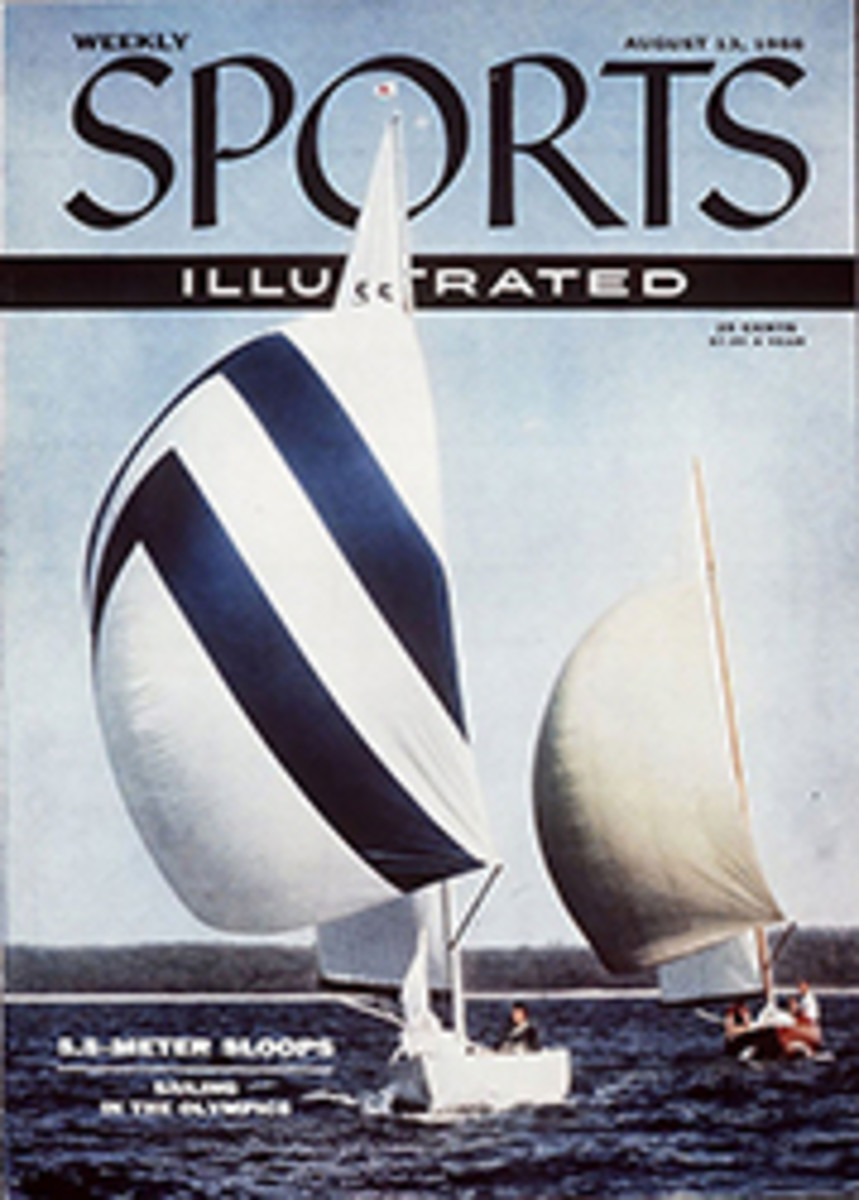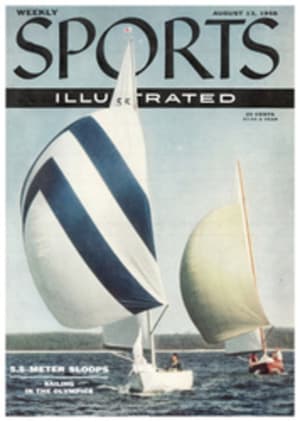
OLYMPIC SAILING: A PREVIEW
For more than a year now, eliminations for the 11-man U.S. Olympic sailing team have been going on around the country; and by the 16th of August, when the 5.5-Meter trials end at Marion, Mass., the team will be complete. The Dragon class trials were sailed off 13 months ago in Port Townsend, Wash., and the skipper, Gene Walet (see page 46), long since chosen. In the 12-Square-Meter Sharpies (page 44) Eric Olsen of Essex, Conn., with Stan Renahan as crew, made the team May 29 by winning a seven-race series for which Jolly boats were used because there are no Sharpies in this country. Last week at Atlantic Highlands, N.J., Herbert P. Williams and Larry Low won in the Stars. There now remain only the 5.5-Meter trials beginning at Marion Aug. 10, and the Finn monotype trials at Ottawa Aug. 12-15.
The races at Ottawa are a replay of the Finn finals, held originally at Marion June 14. In those eliminations, also sailed in Fireflies since the U.S. has no Finns either, young Tom Hazelhurst of Brown University outmaneuvered his more experienced rivals to win by a quarter of a point. However, the first four finishers were so tightly bunched and the light winds so unlike the blustery Melbourne weather that the committee called for a rematch among the four men. This time they will compete in actual Finns, four of which were unearthed at Ottawa. Whether or not Hazelhurst can again hold off sailors like George O'Day, Joe Marvin or Tom Allen is a matter of some doubt. But there is little doubt that whoever does win will have a man's job keeping a gold medal away from Denmark's Paul Elvstrom. It is also doubtful if even as fine a sailor as Eric Olsen can learn enough about a Sharpie before the Olympics to beat Holland's Kraan brothers. And in the Stars Williams is conceded less than an even chance against Charley de Cardenas (right) or the defending Olympic champion, Agostino Straulino of Italy.
The best U.S. classes at Melbourne will be the Dragons and 5.5s, the Dragons because of Walet's ability to sail almost anything, and the 5.5s because of the solid array of talent that America has in that class. One of the top men going into the tryouts this week is Dr. Britton Chance (page 45). But it would be a mistake to rate him a favorite over Herman Whiton (see cover) of New York, a gold medalist in 1948 and 1952 in the Six-Meter class, since dropped for the 5.5s, or over Victor Sheronas, Philadelphia, whose boat has beaten Dr. Chance in three spring tuneups.
The 5.5s are the only Olympic class that allows variation in design. The other four have strict rules of standardization, but the 5.5s permit differences in beam, length, draft, etc., so that the battle among designers leading up to the trials has been as sharp as the sailing competition. For example, Dr. Chance's veteran Complex II, a Swedish-built boat, has done most of its winning in light air. But Ray Hunt and Bill Luders, foremost U.S. designers of 5.5s, have countered by turning out four new heavy-weather boats for Whiton, John MacNamara of Jamaica Plain, Mass., and the Fay brothers of Houston, with an eye on the winds at Melbourne. And then the victor could be a dark horse like La Cris, which young Bob Larsen of New York had built in Norway. The Russians, too, have entered the design war, buying or building more than 60 since they finished dead last among the 5.5s in 1952, their Olympic sailing debut. Even the Soviet zeal, however, will probably not be enough to catch the U.S. or the crack Scandinavians. But in view of Russia's amazing surge in the Winter Olympics, any such concentration by the U.S.S.R. could well mean a shift in the traditional balance of yachting power.
Star class is oldest in Games, has been in every Olympics since 1932. Stars are 22 ft. 8½ in. long, carry 251 sq. ft. of sail. World Champions Charley de Cardenas, son Charley Jr. (above) of Cuba are favorites to take the gold medal at Melbourne.
Finn Monotype, 14 ft. 9 in. long and carrying 108 sq. ft. of canvas in single, Marconi-rigged mainsail, is only class in which skippers do not sail own craft. Boats are provided by host nation, then drawn by lot for races. Paul Elvstrom (above) of Denmark is likely winner in Finns, one of the weakest classes for U.S.
Sharpies are another U.S. weakness, since, like Finns, there are no Sharpies now in competition in American waters. The U.S. trials, won by Eric Olsen, were sailed in Jolly boats. Sharpies are gaff-rigged, 19 ft. 8 in. long, with 120 sq. ft. of sail. Jacques and Hendricus Kraan (right) of Holland should be Melbourne winners.
5.5 meters are only boats not restricted by one-design rules. Length varies from 29 to 33 ft., sail area averages 312 sq. ft. Dr. Britton Chance (above) of Philadelphia won gold medal in 1952, took 1956 U.S. nationals in tuneup for Aug. 10 Olympic trials.
PHOTO
HY PESKIN
MAP
OLYMPIC COURSES for all five racing classes will be laid out around Hobson Bay in northeast corner of Port Phillip Bay.
MELBOURNE
HOBSON BAY
OLYMPIC RACES
SAILED HERE
PORT PHILLIP BAY
GEELONG
BASS STRAIT
INDIAN OCEAN
THREE PHOTOS

